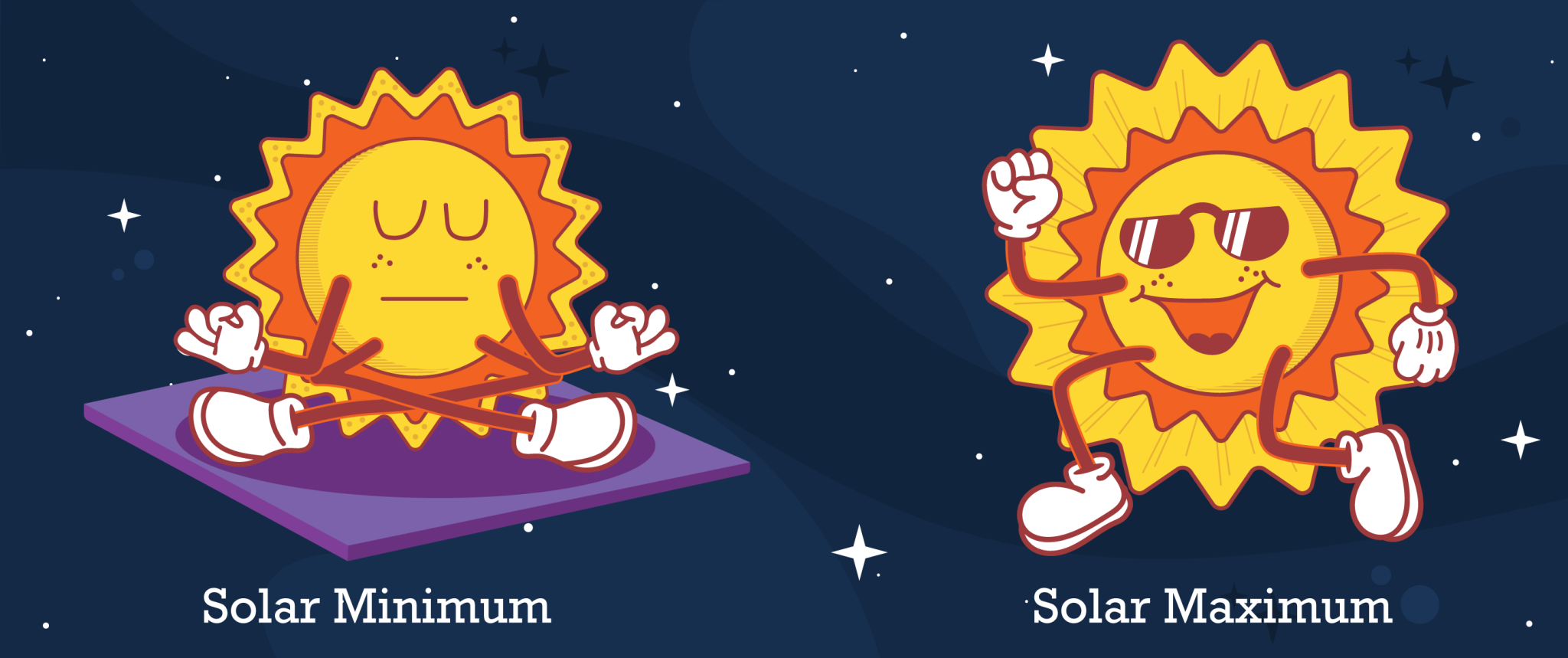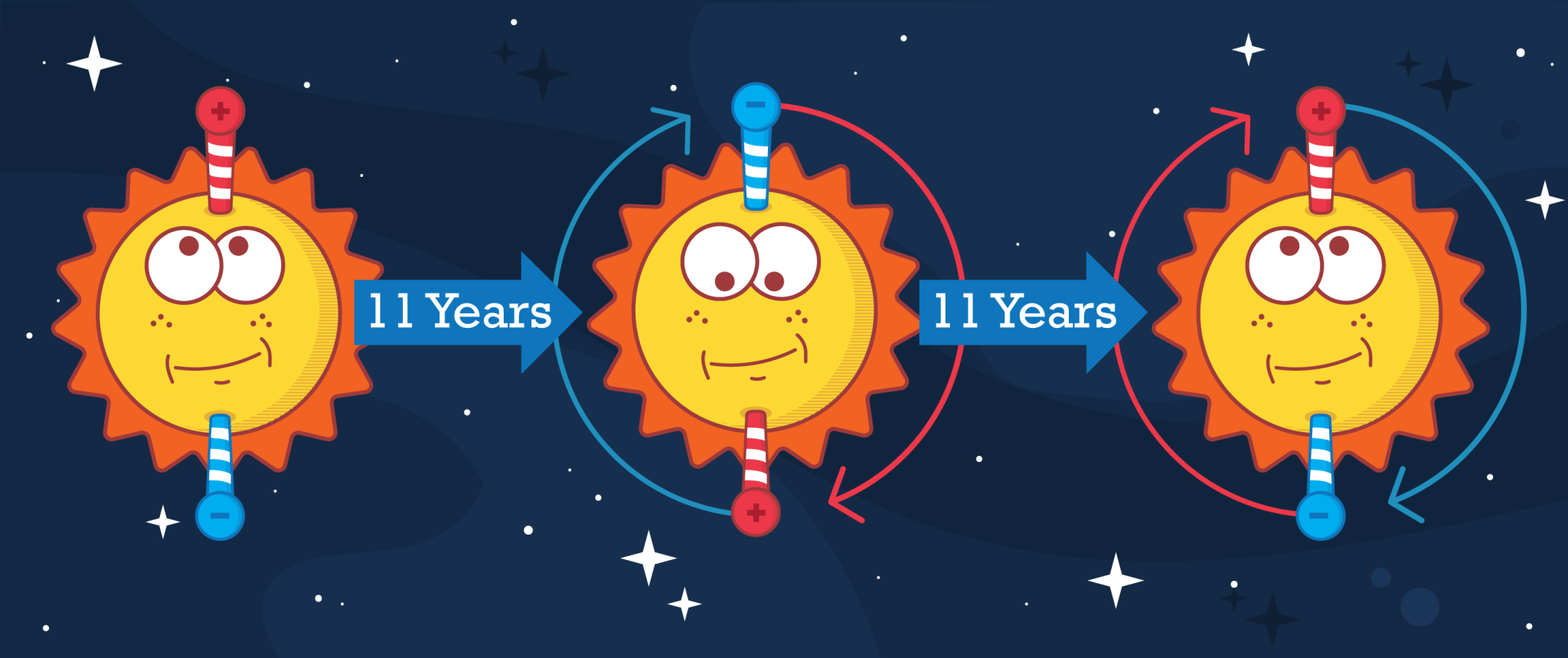
This article is for students grades K-4.
The Sun is a star. It is the biggest object in our solar system. The Sun is about 93 million miles away from Earth and about 4.5 billion years old. The Sun affects Earth's weather, seasons, climate, and more. Let's learn about how the Sun behaves.
Why is the Sun warm and bright?
The Sun is a giant ball made of hydrogen and helium gases. Deep in the center of the Sun, hydrogen atoms are pressed together. This forms helium. When this happens, energy is released. That energy is the heat and light we feel and see all the way here on Earth.

Does the Sun ever change?
Sometimes, the Sun is very active. It gives off a lot of energy. Other times, it is quieter. It gives off less energy. This pattern is called the solar cycle. One solar cycle lasts about 11 years.
Scientists call the time when the Sun is active "solar maximum." During this time, we see darker, cooler spots on the Sun's surface. These are called sunspots. When the Sun is less active, scientists call that "solar minimum."

Does the Sun have a north pole?
Yes! Just like Earth, the Sun has north and south magnetic poles. But every 11 years, the Sun's poles flip. North becomes south and south becomes north.

What is space weather?
Space weather includes things like solar wind, solar storms, and solar flares. When the Sun is active, these things can have an impact on Earth and in space.






